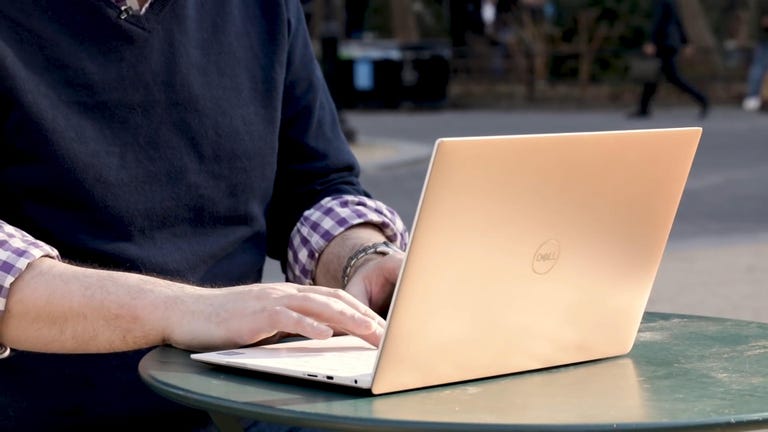 Why You Can Trust CNET
Why You Can Trust CNET
Years of Experience
Hands-on Product Reviewers
Sq. Feet of Lab Space
If you want to keep your TV viewing habits private, using a virtual private network to stream content on your big screen is a good choice. Using a VPN on your standard or smart TV may sound complicated, but the process is neither complicated nor difficult. To help streamline the process, there are a handful of devices that can make using a VPN with your television set as simple as using your go-to mobile app.
Aside from keeping your viewing information private, using a VPN on your TV can broaden the types of content you can stream. Instead of running into shows and movies that are blocked due to the region you live in, a virtual private network can give you access to more streaming content from different parts of the world.
We’ve picked five easy to use devices that will let you stream your favorite shows while using a VPN. And if you aren’t sure which VPN is the right option for you, check out our picks for the best VPNs.
Amazon Fire TV Sticks can be as cheap as $30, are easy to set up on your TV, and are one of the simplest ways to stream TV with a third-party VPN app.
Once you’ve plugged your Fire Stick in to your TV and followed the on-screen setup, you can download apps for some of CNET’s best VPNs for Fire Sticks, like Surfshark, NordVPN and ExpressVPN. If you don’t subscribe to any of those VPN services, no worries. Each offers a 30-day money-back guarantee, so you can try each one risk-free until you find the right one for you.
Here’s how to download a VPN app onto your Fire Stick.
1. Open your Fire Stick on your TV.
2. Open the Amazon Appstore app.
3. Open Search.
4. Type in the name of the VPN you want to download.
5. Click Get.
After you’ve downloaded a VPN app onto your Fire Stick, go back to your home screen to open the app and log in to your account. Then, you can connect to a VPN server in the country or region where you want to unlock specific content, or you can connect to a local VPN server for better private streaming speeds. After connecting to a VPN server, you’re all set to securely watch shows and movies in privacy.


Best if you want to replace your TV
Amazon Fire TVs
Amazon Fire TVs come built-in with all the same capabilities of a Fire Stick, meaning you get all the same features without having to use a precious HDMI slot. Even the Fire TV’s interface is the same as the Fire Stick. To use a VPN through a Fire TV, follow the same steps as above to download a third-party VPN app, log in to your account, connect to the VPN server you want to use and start streaming TV.
However, Fire TVs can cost between $370 and $1,100. So buying a Fire TV to stream shows and movies through a VPN is like buying a new car because you want a new paint job. If your TV works and it can use a Fire Stick, save yourself the money and buy a Fire Stick. But if you’re in the market for a new TV, and you want to use a VPN to stream content, consider a Fire TV to upgrade your streaming experience.


Inexpensive and easy to use
Chromecast With Google TV
Chromecast with Google TV, like the Fire Stick, is another easy to use device that lets you stream TV through a third-party VPN app for around $40.
After you’ve plugged your Chromecast with Google TV in to your TV and followed the setup instructions, you can download most VPN apps, like ExpressVPN and NordVPN, onto your device. If you don’t have a subscription to a VPN service, most offer a 30-day money-back guarantee, so you can try them out risk-free until you find one you’re happy with.
Here’s how to download most third-party VPN apps onto your Chromecast with Google TV.
1. On your Chromecast device, go to the Apps tab.
2. Select Search for app under App categories.
3. Type in the name of the VPN app you want to download.
4. Select Install.
After installing your VPN app, open it from your Chromecast with Google TV’s home screen and log in to your account. Then, connect to a VPN server in the country or region you want to unlock content from. You can also connect to a local VPN server for better private streaming speeds. After that, you’re set to securely watch shows and movies.
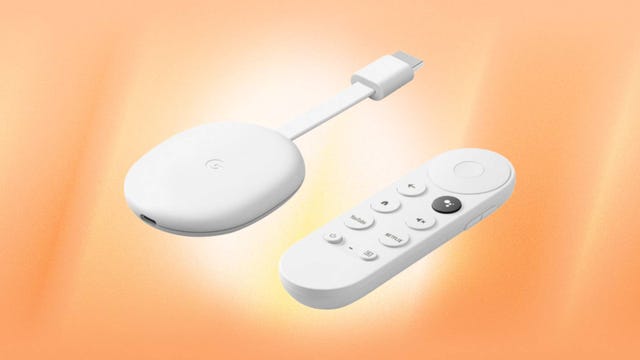

Provides whole-home VPN protection
ExpressVPN’s Aircove router
ExpressVPN’s Aircove router costs less than $200, and it allows you to run all your internet traffic through a VPN, not just your TV. The router has built-in VPN protection, a range of 1,600 square feet, and it allows unlimited simultaneous connections. These unlimited connections can be organized in up to five different groups, too, so if you live with four other people, each person in your house can be connected to a different server location at the same time.
However, you need an ExpressVPN account to use the router’s VPN capabilities. That means you’ll have to switch to ExpressVPN if you have an account with another VPN service. You’ll also need to use your laptop or smartphone to set up your router. That makes setup on the Aircove slightly more complicated than Fire Stick and Fire TV, which you can simply plug in and follow the on-screen instructions.
But once you’ve finished the Aircove’s initial setup, you’ve thrown a blanket of protection over all the internet traffic that runs through the router, which makes it a good option for people looking to run other devices at home through a VPN.
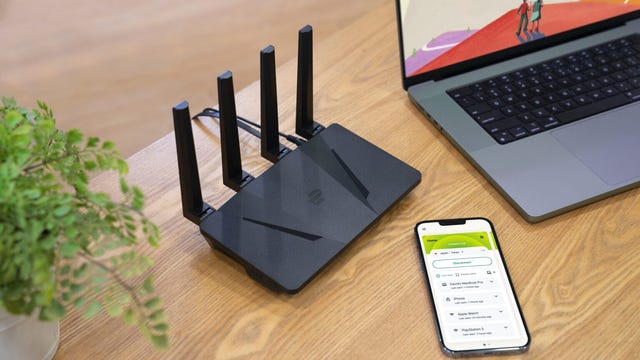

Best for fans of Apple
Apple TV 4K
Apple TV 4K starts at $129, so it’s not the cheapest device on this list, but if you already have the device you can use some third-party VPN apps on it with tvOS 17. Apple announced in the follow-up to its WWDC keynote that tvOS 17 would support third-party VPN apps.
To download a third-party VPN app to your Apple TV, you have to first update your device to tvOS 17. Then, go to the tvOS App Store on your TV, search for your VPN and download it. After downloading, open the app and log into your account, and you’ll be able to connect to VPNs in certain countries or regions from within in the app. You should also see a new VPN tab in the Apple TV control center which allows you to quickly connect and disconnect from your VPN.
However, not all VPN services have apps available for Apple TV at this time. ExpressVPN, for example, doesn’t have a tvOS app yet, but said on Reddit that it was working to bring an app to tvOS. So if you don’t see your app available, your provider might still be working on a compatible app.
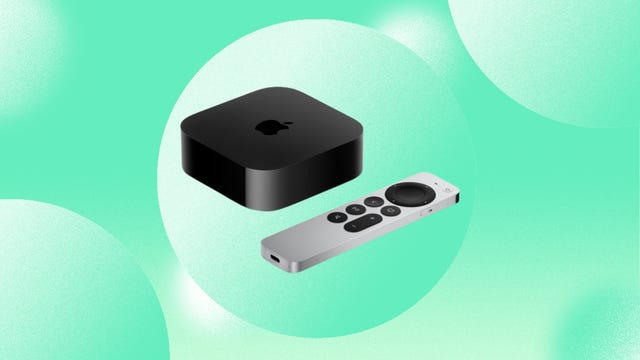

For more on VPNs, check out CNET’s best overall VPN services of 2023, the best VPN for your smart TV and how to set up a VPN on your smart TV.

Amazon Hops on the Passkey Train. Here’s How You Can Set Yours Up
Joining the passwordless movement, Amazon announced earlier this week that you’ll now be able to use passkeys to log in to your Amazon accounts. The tech giant joins a slew of companies who are saying goodbye to passwords and opting for passkeys instead.
Switching to passkeys isn’t mandatory for Amazon customers, the shopping giant said, so if you’re not ready to make the switch, you can keep using your passwords. But if you’re interested in ditching your passwords for good, you can go ahead and set up your Amazon passkey right now.
Here’s what to know about Amazon’s adoption of the password alternative. For more, here’s how Apple’s adopting passkeys and what Google is doing to ditch passwords.
What is a passkey?
Passkeys are a new, secure and easier way to log in to a service or website using biometric authentication like a fingerprint or face scan (or other methods, like a PIN) instead of a password. You might already have a bit of experience with passkeys. For example, if you have Face ID set up on your iPhone, some apps allow you to to use Face ID to sign in instead of typing your account password.
According to backers of passkeys, it’s a more secure method of logging into your accounts than with traditional passwords and is much less susceptible to phishing attacks. Passkeys can be more convenient than keeping track of all of your passwords, let you log in usually with just a click instead of several taps and eliminate the need for two-factor authentication codes, which can clog up your inbox or messages app.
Who else is implementing passkeys?
Amazon is the latest in a string of tech companies that have either axed passwords or given customers the option to use a passkey instead of a password. In adopting passkeys, the online retailer joins the likes of Google, Nintendo and Apple in passwordless support.
Which Amazon services work with passkeys now?
Right now, Amazon has only rolled out passkeys to its primary retail website.
In a response to CNET’s request for comment on where users could take advantage of passkeys, Amazon said “Passkey support is available globally today for all Amazon customers using browsers.” The company indicated that more support would be rolling out to the iOS Amazon Shopping app and that the Android Amazon Shopping app would be receiving passkey support in the near future.
The company also said that it “will be adding passkeys to more apps in the future,” so users of Amazon-owned companies like Goodreads and Twitch could expect to see passkey support at some point in their future, too.
How to set up a passkey on your Amazon account
If you’re interested in ditching your password and opting to use a passkey for your Amazon account, it’s easy to set up. Again, passkeys aren’t mandatory for Amazon customers, so if you feel more comfortable using your password, you won’t have to worry about changing over right away.
To set up a passkey, all you have to do is go to your Account page and select Login & Security.
Once in the Login & Security menu, scroll down to the Passkeys tab and select the Set Up button.
This should bring you to another screen, where you will select Set Up again.
After selecting Set Up a second time, follow the onscreen instructions that are specific to your device or browser to set up your passkey.
After completing these steps, you can say goodbye to your passwords and use your passkey to log in to your Amazon account.
For more, here’s how to use passkeys to login to your Google account and the best password manager for 2023.
How Dolby Vision and Atmos Make Scary Movies Like ‘It’ More Immersive — and Terrifying
I’ve watched the movie It several times. But I’d never seen it while having dozens of sensors attached to my head and fingers, measuring my brain activity and skin conductance as Pennywise’s sharp, pointed teeth snapped at me from the screen — until now.
I stopped by Dolby’s San Francisco office to learn more about how image and sound work together to make you feel emotions like fear, joy and sadness. My visit started with watching clips from films like Dune and A Quiet Place in Dolby’s cinema (in which I felt incredibly immersed), before migrating to the company’s biophysical lab, where I was strapped to all manner of sensors, from an EEG monitor to measure neural activity, to an eye tracker and pupilometer, which measures gaze and changes in pupil dilation, while watching scenes from It. Giant screens around the room showed my body reacting to each jump scare and suspenseful moment with a series of spikes.
Movies like these are made to be more immersive thanks to tech like Dolby Vision and Atmos. Dolby Vision makes images on your screen look more realistic by increasing brightness, amplifying colors and depicting deep, dark levels of black. Dolby Atmos makes it seem like sounds are all around you, instead of just coming from the left or right. So you can actually hear people and objects move closer or further away, making it feel like you’re actually in the scene you’re watching. Sounds can be placed in specific areas, so you can hear a spaceship fly above you, or a car drive past you. It’s designed to mimic how you’d hear in the real world.
When watching a clip from The Last of Us, as people fired guns in the background, it sounded like they were behind me. But when a character who was front and center was shooting, that’s also where the sound seemed to come from.
Getting to experience those immersive sounds and visuals at Dolby was an entrancing (and sometimes terrifying) experience, but you can re-create the experience at home. Dolby Vision and Atmos are in everything from the latest iPhones and Samsung phones to TVs and soundbars from companies like LG, Sony and TCL. Streaming services like Netflix, Disney Plus and Apple TV Plus support Dolby Vision and Atmos, so you can also watch immersive content right from your couch. AirPods can play Dolby Atmos through Apple Music, and you’ll find the tech in game consoles like the PlayStation 5 and Xbox Series X or S.
So, as cool as Dolby’s biophysical lab is, you won’t need one to know that a creepy clown depicted in Dolby Vision and Atmos can make your skin crawl.
Check out the video above to learn more about how Dolby Vision and Atmos work to amplify certain emotions, how to re-create the experience in your living room, and, of course, to see me react to scary onscreen content.
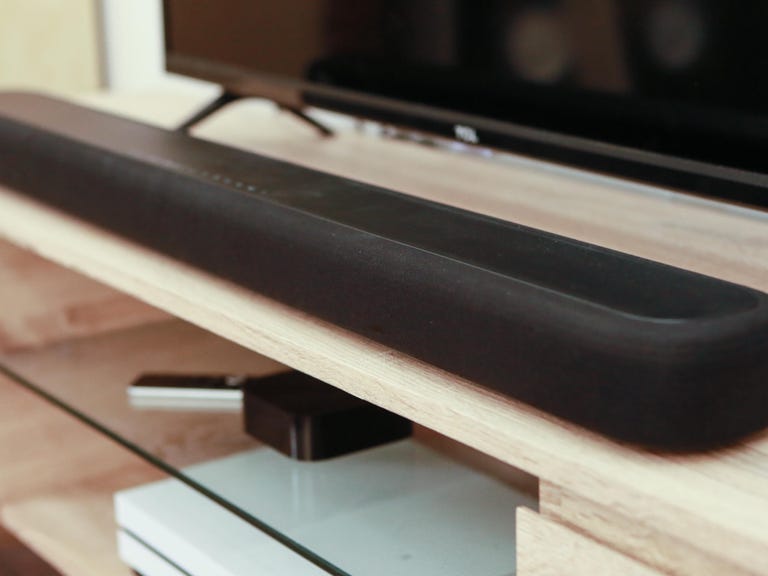
Best Speakers of 2023
 Why You Can Trust CNET
Why You Can Trust CNET
Years of Experience
Hands-on Product Reviewers
Sq. Feet of Lab Space
Whether you’re interested in background music for your next BBQ or looking to upgrade a stereo system, there’s a speaker set ready for you. Speakers tend to be designed with a specific purpose in mind. For example, do you want speakers for your television, computer speakers or a set for a specific room? Perhaps you need portable Bluetooth speakers to take on a trip? Not all speakers are created equal.
I’ve highlighted the best wired and wireless speakers I’ve tested costing between $50 and $1,000. While most of the included systems are powered speakers, you’ll also find passive bookshelf speakers, such as the Elac Debut 2.0 B6.2, which just need to be paired with a great AV receiver.
From smart speakers to outdoor speakers to immersive home theater systems, every model I’ve chosen boasts great sound quality and is the best speaker in its particular category. I’ll update this list periodically as we review new products, so you can take your audio setup to the next level.
Read more: Best Soundbar for 2023
With great sound, a compact size and the Alexa voice assistant built-in, the Sonos Era 100 packs a lot of punch, making it the best smart speaker for the money.
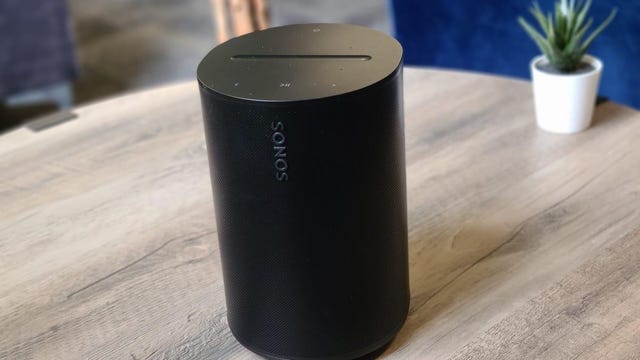
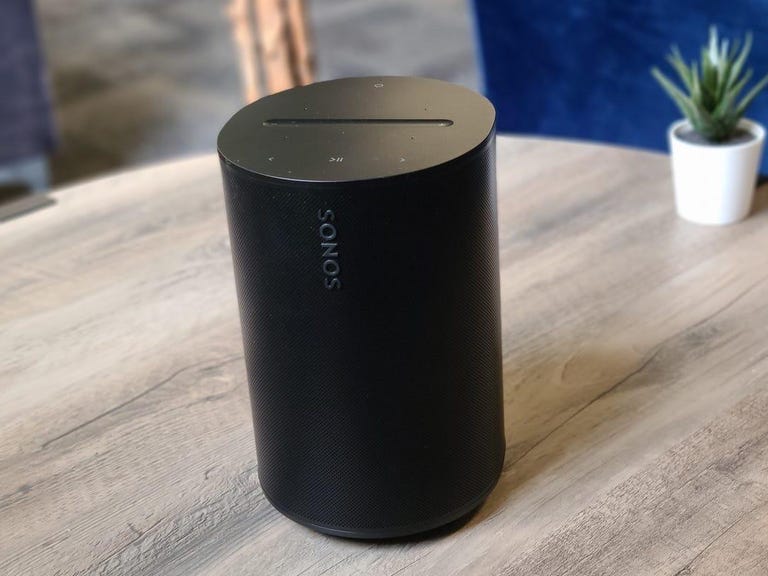
Best bookshelf speakers for the money
Elac Debut 2.0 B6.2
Elac has been belting out classic, affordable designs ever since its, er, debut in 2015. The Debut 2.0 exemplifies the brand’s appeal to both the budget-conscious and audiophiles. It offers a lively, insightful sound and attractive looks for around $400.

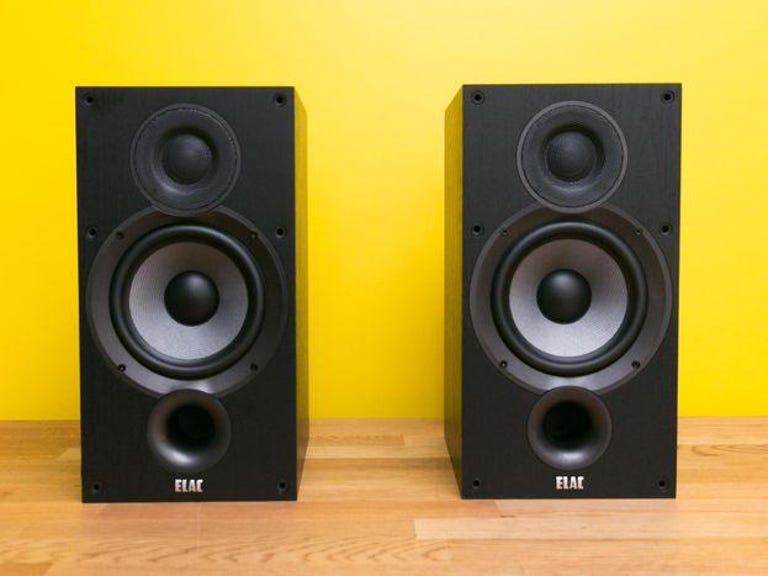
ELAC’s Andrew Jones just recently revised the Debut B6 speaker, now it’s the Debut 2.0 B6.2 ($298/pair), and the sound is much improved. Home theater buyers can partner the Debut B6.2 with ELAC’s matching Debut Series F5.2 towers ($299/each), C5.2 center channel speaker ($198) and an ELAC SUB3010 subwoofer ($449).
Best tower speakers for the money
Fluance XL8F
Want the biggest sound? You’ll need big speakers. The fit and finish of the large Fluance XL8 towers is unmatched by other speakers at its price. The sound of the XL8F is open and thrilling, but never shrill, and when fed a movie soundtrack these speakers simply zing. They’re no slouch with music either. If you truly want the maximum speaker for your money, the huge Fluance XL8F has no equal.
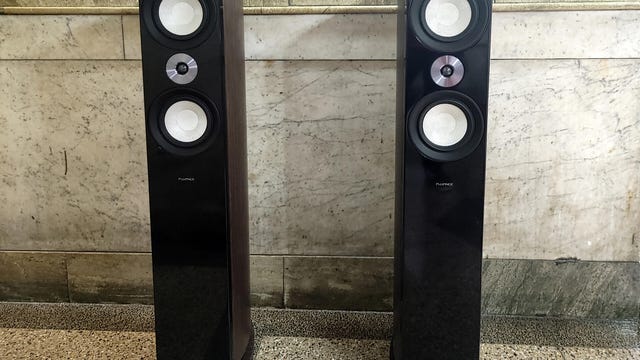
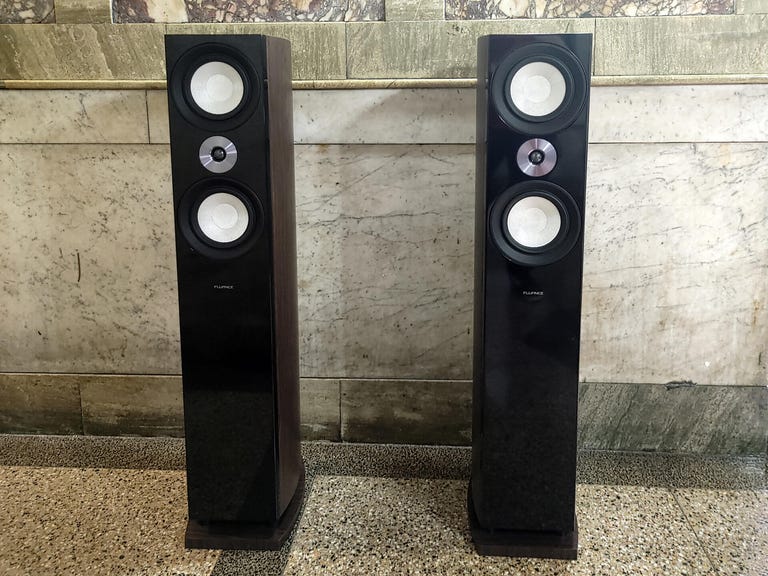
Best budget Bluetooth speaker
Tribit Stormbox Micro
Budget Bluetooth speakers are seemingly a dime a dozen, but among the countless options there do lie some gems. The $50 Tribit Stormbox Micro is a compact, portable speaker that offers both waterproofing and excellent bass for its size.


Best budget soundbar
Roku Streambar
The$130 Roku Streambar is a hybrid soundbar-4K video streamer and the most welcome surprise is that it’s able to perform both tasks well. Pair it with a bedroom TV and the optional Onn Wireless Sub for a killer home theater setup.
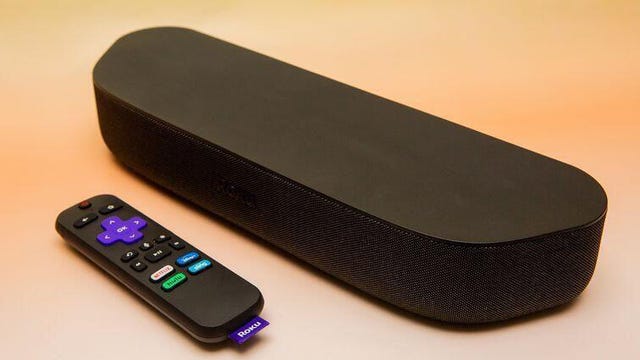
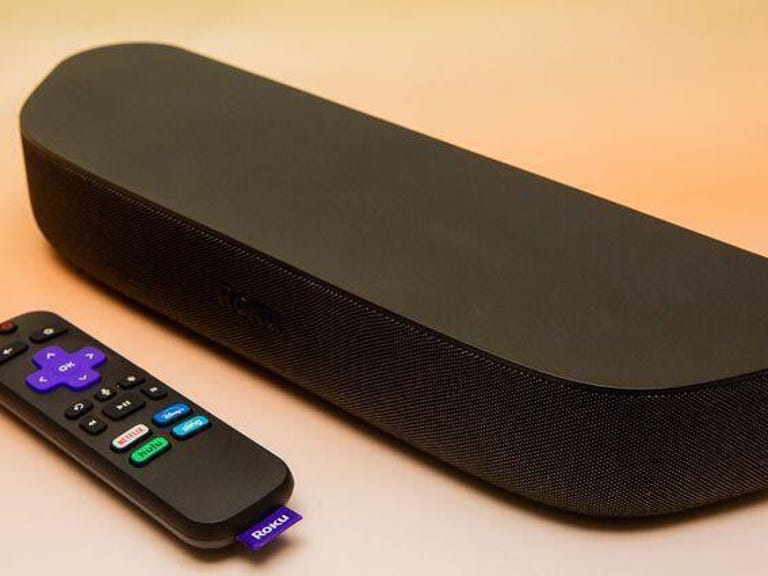
Best surround sound speakers
Klipsch Reference Cinema System 5.1.4 With Dolby Atmos
If there was ever a bargain in home theater it was this — for around the same price as the Elac speakers above you can get a full Dolby Atmos setup. With a sub! Sound quality is excellent and the Klipsch kit includes all of the cables you need in the box.

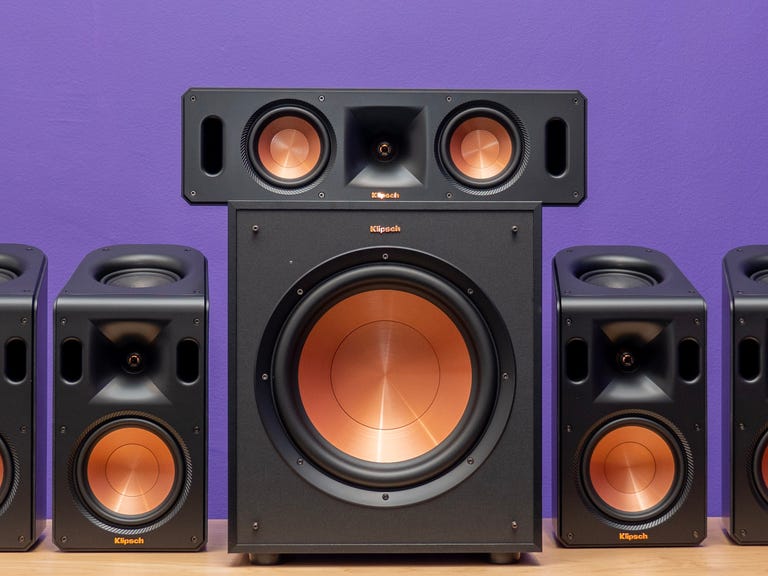
Best computer speakers
Edifier R1280DB
The Edifier R1280DB offers almost everything you could want in a PC speaker — excellent sound, a range of connections including Bluetooth and a compact footprint — and all for a reasonable $150. It doesn’t offer USB, though, so connect the headphone/line out of your PC to it instead.


Best smart soundbar
Yamaha YAS-209
The Yamaha YAS-209 is one of the most fully featured soundbars the company has ever offered — especially at the price. With Alexa, HDMI connectivity and a wireless subwoofer, this soundbar doesn’t want for anything. The sound quality is great too.

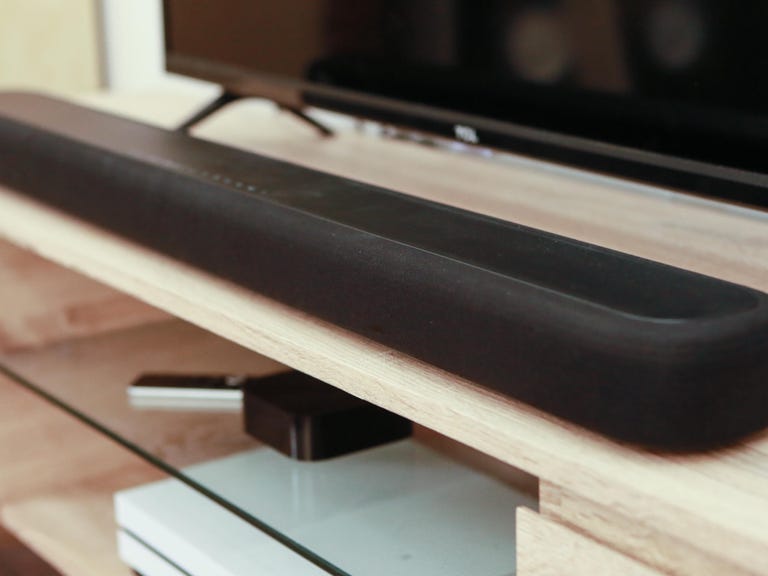
Best high-end soundbar
Vizio Elevate
The Vizio Elevate may have one big gimmick at the core of it, that revolving height speaker, but it also offers sound quality to back up the gee-whizzery. This is a 5.1.4 Dolby Atmos soundbar, with a hefty subwoofer, and its performance is equally thrilling in both movies and music. Add in a bunch of streaming features and you have the best surround system under a grand.
More home entertainment essentials
- Sonos One vs. Amazon Echo Studio: Which Should You Buy?
- Best Sonos Speakers from $100
- Best 4K Projectors
- Best Wireless Speakers” target=”_blank
- Best Soundbars under $300″ target=”_blank
- Best Soundbars with Amazon Alexa” target=”_blank
- Best Bluetooth Speakers” target=”_blank
- Best Headphones” target=”_blank
- Best Turntables Under $300″ target=”_blank
- Best PC Speakers
- Best AV Receivers” target=”_blank
- Best Universal Remotes
- Best Dolby Atmos Soundbar
- Best Wireless Bluetooth Boombox
- Best Home Theater Systems
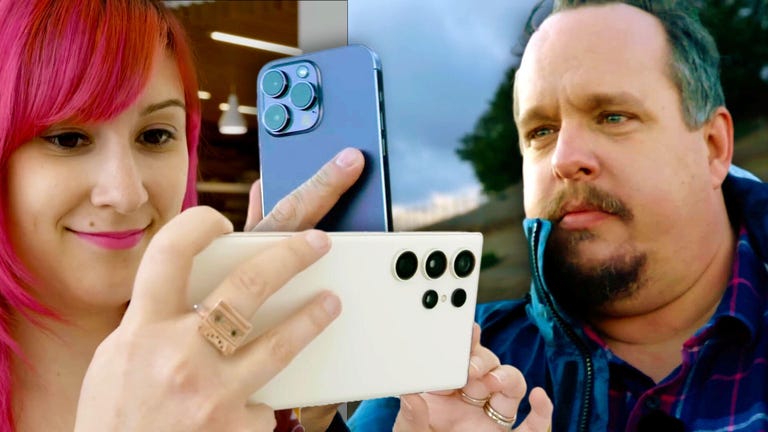
Best T-Mobile Phones for 2023
 Why You Can Trust CNET
Why You Can Trust CNET
Years of Experience
Hands-on Product Reviewers
Sq. Feet of Lab Space
If you’re a T-Mobile user after a new phone, you have loads of options. You can get top phones like the iPhone 15 Pro and Galaxy S23 Ultra along with exciting foldables like Samsung’s Galaxy Z Flip 5 or the Motorola Razr Plus. While the phones included in this list vary when it comes to size, price and features, there are a few things they share in common. The best phones of 2023 have fast processors and vibrant screens to make your Netflix shows look great. The best phones also have high-quality rear cameras that allow you to take gorgeous images you’ll return to look back on for years to come. Budget-friendly phones like the Pixel 7A also offer smooth all-around performance at a more cost-conscious price.
No matter what you want or use the phone for, there’s a device for you. To simplify the decision, we’ve rounded up our top picks. Each phone on this list meets the requirements for what CNET considers to be a best T-Mobile smartphone. Every phone on this list has been thoroughly reviewed and tested, and you’ll find options across iPhone and Android that fit different needs and different budgets. Below we’ve picked the best T-Mobile phones you can get this year.
What is the best T-Mobile phone for most people?
The best phone for iPhone fans is the $799 iPhone 15. It has one of Apple’s most recent processors, the A16 Bionic chip found in last year’s iPhone 14 Pro, meaning it should support new software features for years to come. The iPhone 15 has the best balance of camera performance and features (like the Dynamic Island) that will feel new to those coming from older iPhones to satisfy most people.
For more info, read our guide to help find the best phone for your needs and take a look at our tips on how to buy a new Apple iPhone or Android phone and where to snag the best phone deals.
With the Dynamic Island, a USB-C port for more convenient charging and an upgraded camera with a higher resolution and a crisper zoom, the iPhone 15 is a significant upgrade for those with older iPhones. It feels like a scaled back version of the iPhone 14 Pro, making Apple’s entry-level iPhone 15 feel like a bigger leap forward than last year’s.
The iPhone 15 is available in two size options: the 6.1-inch iPhone 15 and the 6.7-inch iPhone 15 Plus. They run on the same chip as iPhone 14 Pro, the A16 Bionic, which should bring notable performance upgrades to those with an iPhone that’s several years old. These phones also have Apple’s second-generation ultra wideband chip, enabling a new feature that makes it easier to find friends or family members in a crowd.
Last year’s iPhone 14 Pro may be a better choice if you can still find it through third-party retailers at a discount, particularly because it has a dedicated telephoto lens. But the iPhone 15 is the most exciting upgrade Apple’s standard iPhone has seen in years. Read our iPhone 15 and 15 Plus review.
Pros:
- USB-C port for more convenient charging.
- Colorful matte design.
- Improved camera that can automatically take people and pet portraits.
- Dynamic Island brings better multitasking.
Cons:
- No always-on display.
- Find My Friends feature only works with other iPhone 15 phones.
- Discounted iPhone 14 Pro may be a better value.
- Galaxy S23 offers a longer optical zoom.
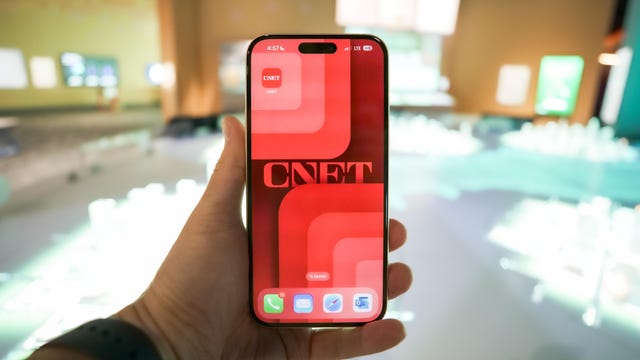
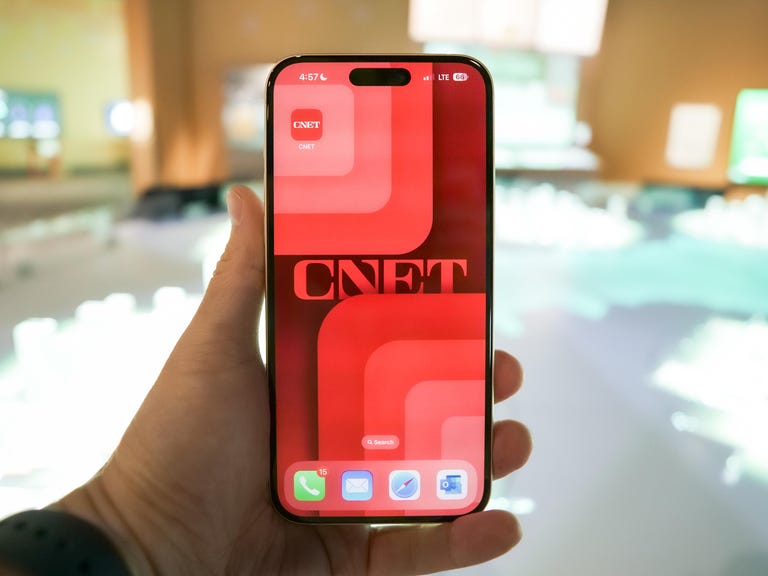
The iPhone 15
Best premium iPhone
iPhone 15 Pro
Apple gave its Pro models a glow-up with a refreshed lighter build, a new shortcut button and the world’s smallest processor. And it did all this while managing to keep that tried-and-true iPhone aesthetic front and center. They also made more of a differentiation between the Pro and Pro Max model. The 15 Pro also still has the same familiar 3x telephoto camera found on previous models, while the Pro Max takes that further to 5x.
The brain behind the iPhone 15 Pro and Pro Max is the A17 Pro chip, which has the performance chops to handle console tier video games like Resident Evil Village. If the A17 Pro chip is the brains, then iOS 17 is the 15 Pro and Pro Max’s soul. The new OS is filled with lots of quality of life improvements throughout like StandBy mode, Check-In, Stickers in Messages and better autocorrect for the keyboard.
The iPhone 15 Pro and 15 Pro Max are some of the best phones released by Apple or any phone maker this year. Read our Apple iPhone 15 Pro and 15 Pro Max review.
Pros:
- Lighter and more comfortable to hold
- A17 Pro for console video games
- Being able to change the focus in Portrait photos is welcome
- Easier and cheaper to repair back glass
Cons:
- Action button can only trigger one action
- Baseline 15 Pro Max is $100 more
- The only color option is blue
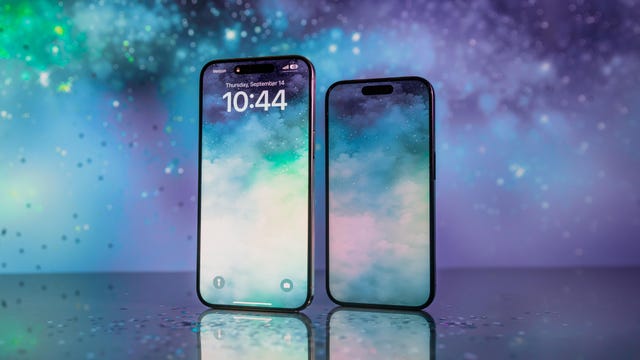
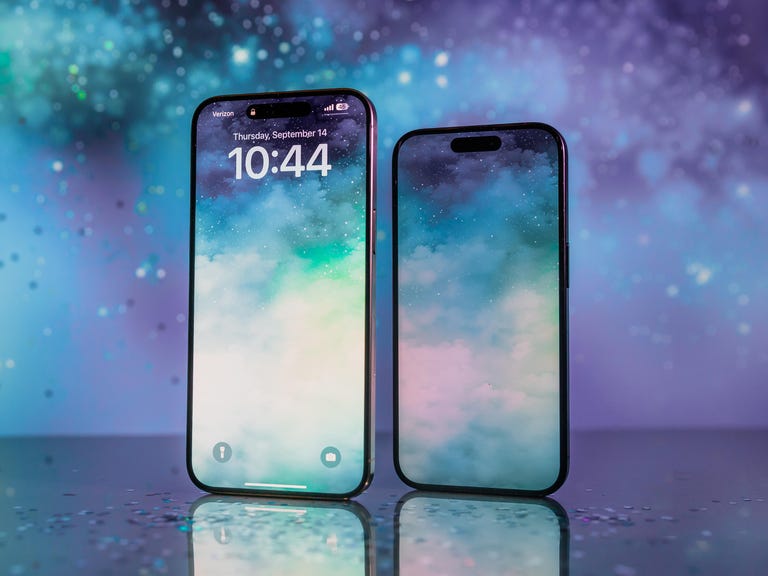
Best premium Android phone
Samsung Galaxy S23 Ultra
The Galaxy S23 is a lot, but in a good way. It’s more than most people need in a phone, but that doesn’t make it any less impressive. Samsung made improvements to the camera’s resolution (200 megapixels compared to 108 megapixels), color tones and dynamic range, while retaining the same edgy design and massive 6.8-inch screen as its predecessor. There’s also a new Qualcomm Snapdragon 8 Gen 2 processor that’s been optimized specifically for Samsung’s phones, which brings faster performance compared to the Galaxy S22 Ultra.
Starting at $1,200, it may be an understatement to call this phone expensive. But those willing to pay more for a giant screen and a high-quality, versatile camera won’t be disappointed. Read our full review of the Galaxy S23 Ultra.
Pros:
- Fast performance
- Excellent main camera, especially in low light
- Bright screen
- Included stylus
- Double the storage in the base model
- Four years of Android OS updates
Cons:
- High price
- Photos don’t always look natural, especially selfies
- No improvements to fast charging
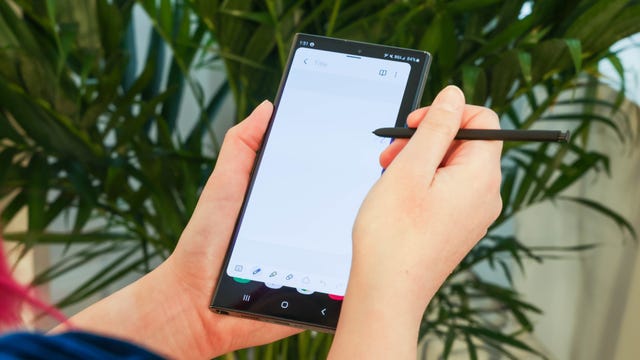
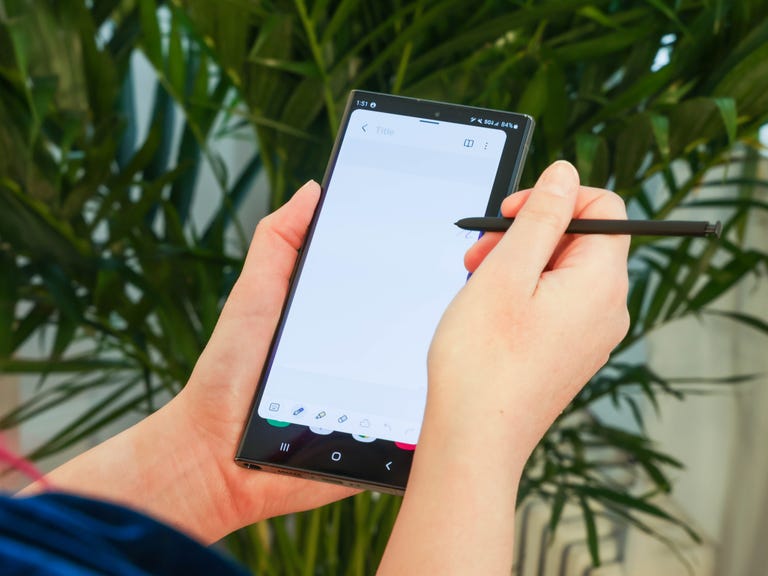
Best everyday phone
Apple iPhone 13
While the iPhone 15 Pro has all the exciting tech packed in, it also has a huge price attached. The standard iPhone 13 is a reliable choice for most people, sporting a 6.1-inch screen and two excellent rear cameras.
Its performance and camera quality aren’t as good as you’d get from the top end iPhone 15, but the iPhone 13 will still receive the latest iOS updates, and its lower price makes it a great option for those of you not wanting to splash all your cash on the latest tech.
Pros:
- Good cameras
- Solid battery life
- Cinematic mode is fun
- Affordable price compared to other iPhones
Cons:
- Notch is noticeable
- Cinematic mode is more of a novelty than a pro feature
- Selfie camera could be better
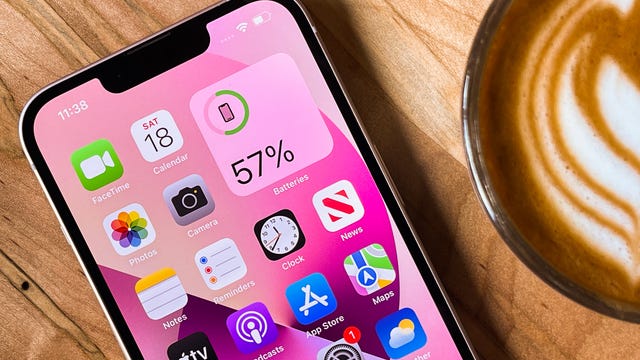
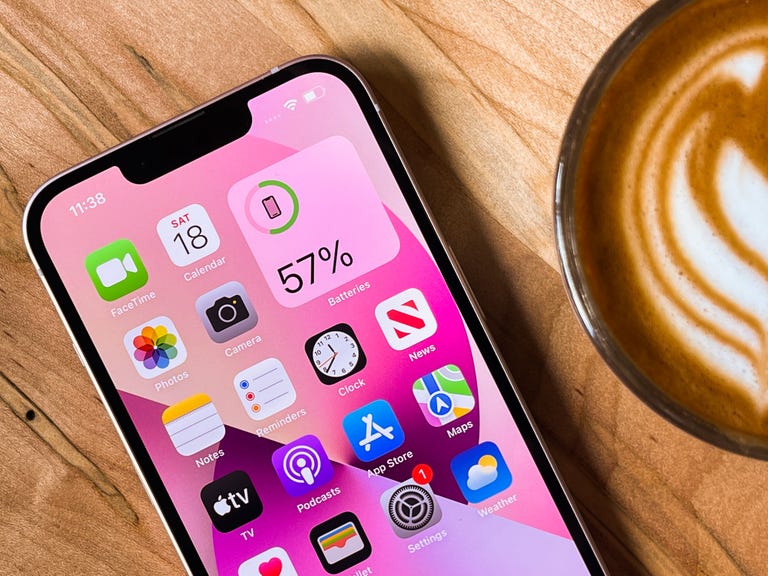
Best Android phone for $500
Google Pixel 7A
Google’s budget phone took a leap forward in 2023 with the Pixel 7A, which offers many of the same benefits as the Pixel 7 but at a cheaper price. Like the Pixel 7, the Pixel 7A runs on Google’s Tensor G2 processor, meaning it has many of the same photo editing and language translation features as its pricier sibling. The Pixel 7A’s 64-megapixel camera also takes excellent photos that rival the Pixel 7’s in quality.
While we still like the Pixel 7, the Pixel 7A’s lower price makes it a better deal for most people. Only opt for the Pixel 7 if you really want a slightly larger screen and are willing to pay the extra $100 for it. Otherwise, the main differences between the Pixel 7 and 7A come down to the former’s more durable build, slightly faster charging and its ability to wirelessly charge compatible accessories. The Pixel 7 also has a larger camera sensor that’s more sensitive to light, according to Google, but CNET’s Lisa Eadicicco didn’t notice much of a difference.
Pros:
- Excellent camera
- Many of the same features as the Pixel 7 at a cheaper price
- Attractive design
- Gains wireless charging, face unlock and high refresh rate
Cons:
- Screen still looks dim outdoors
- Higher price compared with Pixel 6A at launch
- Only three generations of Android OS updates compared with Samsung’s four
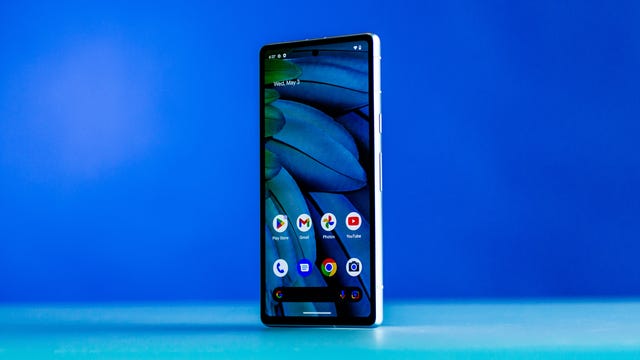
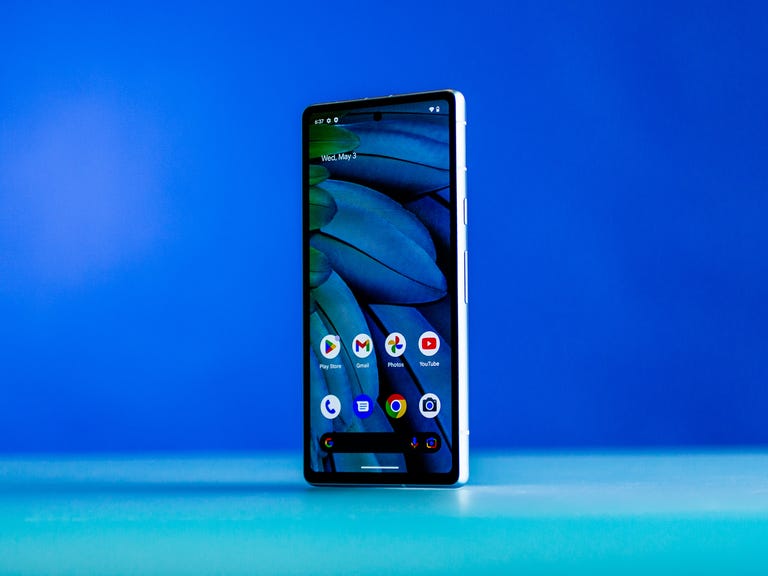
Best foldable phone
Samsung Galaxy Z Flip 5
The Galaxy Z Flip 5 is the biggest leap forward Samsung’s flip phone has seen in years. Samsung has significantly expanded the size of the cover screen located on the outside of the device, meaning you can look up directions, take photos and send messages without opening the phone. It’s this combined with the Z Flip’s solid battery life and sturdy design that makes it a top pick.
The Z Flip 5 may be our favorite flip phone, but there are still some drawbacks to be aware of. At $1,000, it’s still expensive for a phone without a telephoto camera. And not all apps work natively on the front screen as they do on the Motorola Razr Plus.
Pros:
- Big cover screen is fun to use
- New hinge eliminates the gap when closed
- Solid battery life
- More storage in base model
Cons:
- Expensive
- Not all apps work on the cover screen natively
- Apps don’t transition from main screen to cover screen
- Minimal camera updates
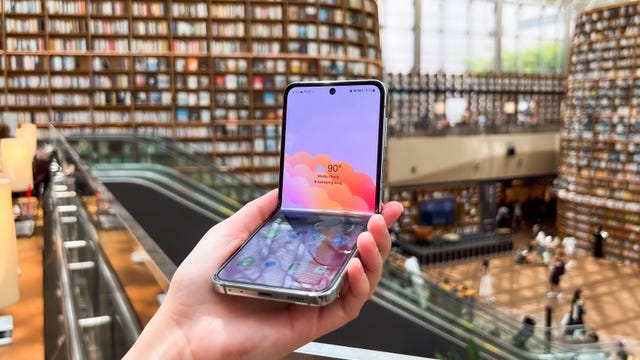
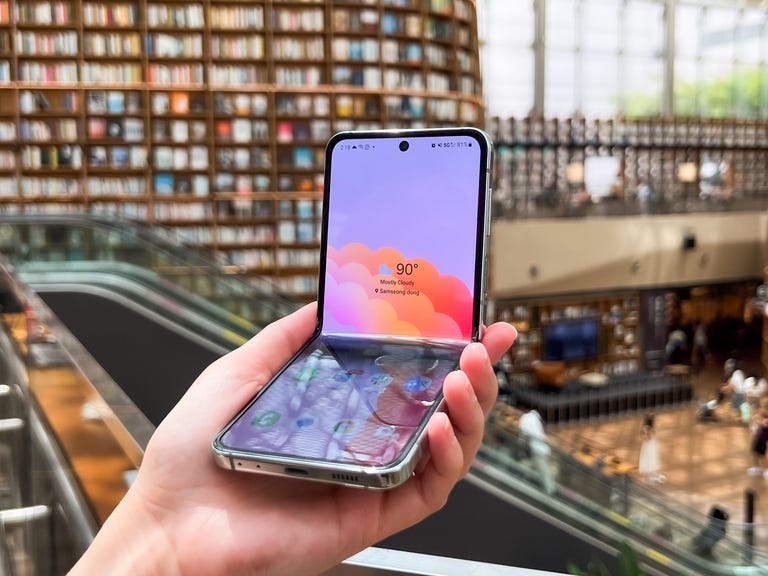
Best phone with a stylus
Motorola Moto G Stylus 5G
If you’re looking for a good budget phone that comes with a basic stylus and support for 5G, then the Moto G Stylus 5 is a great pick. The cell phone features a stylus that you can store inside the phone along with a built-in Notes app to help with productivity. This phone also offers a triple-rear camera, 128GB of internal storage and a robust 4,000-mAh battery.
Pros:
- Large, useful cover screen
- Crease is barely visible
- Thin design
- Good battery life
- Fun photography features like photo previews
Cons:
- Not as many Android updates as Samsung
- Flex View feels limited
- Front screen gathers fingerprint smudges easily
- $1,000 is still expensive
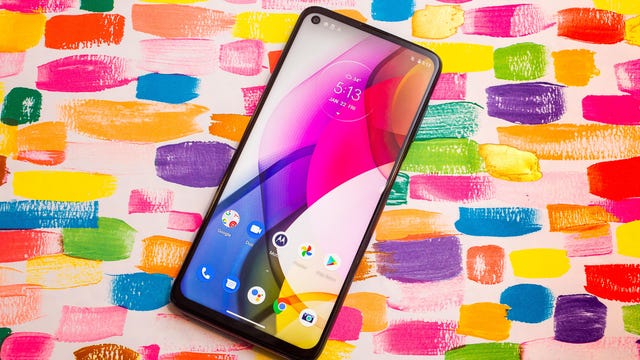
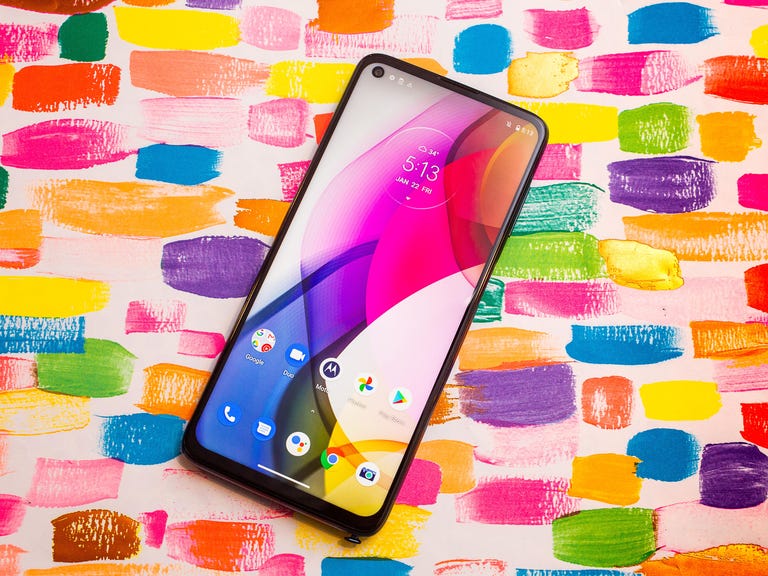
Other phones we tested
The $450 Samsung Galaxy A54 5G proves, you can get a phone with solid performance for a very reasonable price. It packs a 6.4-inch display, an octa-core processor that offers enough power for daily essentials (including light gaming) and a camera that does a decent job of handling your out-and-about snaps. Its 128GB of storage will be enough for most people, and those who need more space can expand it with microSD cards up to 1TB in size.
The $300 OnePlus Nord N30 5G includes a lot of features for the money, but its 50W charging speed is the standout feature. The phone can charge from 0% to 100% in 45 minutes. Its large 6.72-inch 1,080p display runs at a 120Hz refresh rate making apps, games, websites and streaming video animate smoothly. However it’s worth calling out that the 108-megapixel main camera — despite having an astounding megapixel count — takes photos that are only marginally better than other $300 phones.
How to buy a T-Mobile phone
Go to a T-Mobile store: The best way to know if you’ll like a phone or not is to try it in-person.
Pick one: Android or iOS: If you’ve been on an Android phone and are thinking about getting an iPhone, ask your friends and family what they have. If the people you communicate with most are tied into Apple’s ecosystem, it benefits you to stay on team iPhone. If your family are all on Android phones, it might be worth staying with a Pixel phone or Samsung Galaxy phone. Otherwise, it’s simple enough to switch platforms.
Look at last year’s phones: Phones released last year still have many of the same features as a brand new one often at a discounted price.
Don’t discount cheaper handsets: Features of last year’s flagships always trickle down to this year’s midrange handsets.You can get a great phone that does almost everything that a premium phone can do for $500-700.
Buy a phone case: Protect your new phone from wear and tear and even serious damage.
How we test phones
We test every phone in real-world scenarios, focusing on its features, design, performance, cameras, battery life and overall value. We document our findings in an initial review that is periodically updated when there are new software updates, or to compare it against new phones from competitors such as Apple, Samsung, Google and OnePlus.
Photography
Photography is a major focus for most phones these days, so we take pictures and videos of various subjects in a variety of settings and lighting scenarios. We try out any new camera modes, such as Action mode that debuted with the iPhone 14 line, or the Unblur photo tool that launched with the Google Pixel 7 series.
Battery life
Battery testing is conducted in a variety of ways. We assess how long a phone lasts during a typical day of use and note how it performs during more focused sessions of video calls, media streaming and gaming. We also conduct a video playback test, as a simple, replicable measure of pure battery life, which isn’t always included in the initial review but sometimes added later in an update.
Performance measuring
We use benchmarking apps to measure each phone’s performance, alongside our own anecdotal experiences using the phone for our review. Of note are how graphics and animations look. Are they smooth? Or do they lag or stutter? We also look at how quickly the phone switches between horizontal and vertical orientations, and how fast the camera app opens and is ready to take a photo.
We perform processor-heavy tasks like editing photos, exporting videos and playing games. We evaluate whether a newer version of a particular phone includes enough features to make it worth upgrading from older models.
Read more: How We Test Phones
Phone FAQs

Crystal Palace vs. Spurs Livestream: How to Watch Premier League Soccer From Anywhere
There’s an intriguing London derby in store at Selhurst Park today as Crystal Palace look to end table-topping Tottenham’s unbeaten run.
Under new boss Ange Postecoglou, Spurs have made their best start to a season since winning an historic league and cup double all the way back in 1960-61.
Palace currently find themselves in a respectable 11th, but goals have been a problem for Roy Hodgson’s men, with the Eagles having hit the net just seven times in their nine league games so far.
Below, we’ll outline the best live TV streaming services to use to watch all of the action live wherever you are in the world.

Crystal Palace vs. Spurs: When and where?
Crystal Palace hosts Tottenham Hotspurs at Selhurst Park on Friday, Oct. 27. Kickoff is set for 8 p.m. BST (3 p.m. ET, 12 p.m PT, 6 a.m. AEDT).
How to watch the Crystal Palace vs. Spurs game online from anywhere using a VPN
If you find yourself unable to view the game locally, you may need a different way to watch the game — that’s where using a VPN can come in handy. A VPN is also the best way to stop your ISP from throttling your speeds on game day by encrypting your traffic, and it’s also a great idea if you’re traveling and find yourself connected to a Wi-Fi network, and you want to add an extra layer of privacy for your devices and logins.
With a VPN, you’re able to virtually change your location on your phone, tablet or laptop to get access to the game. So if your internet provider or mobile carrier has stuck you with an IP address that incorrectly shows your location in a blackout zone, a VPN can correct that problem by giving you an IP address in your correct, non-blackout area. Most VPNs, like our Editors’ Choice, ExpressVPN, make it really easy to do this.
Using a VPN to watch or stream sports is legal in any country where VPNs are legal, including the US, UK and Canada, as long as you have a legitimate subscription to the service you’re streaming. You should be sure your VPN is set up correctly to prevent leaks: Even where VPNs are legal, the streaming service may terminate the account of anyone it deems to be circumventing correctly applied blackout restrictions.
Looking for other options? Be sure to check out some of the other great VPN deals taking place right now.
Livestream the Crystal Palace vs. Spurs game in the US
Friday’s Crystal Palace-Spurs match is on USA Network, which you can access as part of your cable package or at the NBC Sports website with a valid login, and can be streamed via Sling TV and other more expensive streaming TV services.
Livestream the Crystal Palace vs. Spurs game in the UK
Premier League rights in the UK are split between Sky Sports, Amazon Prime Video and TNT Sports (previously known as BT Sport). The Crystal Palace-Spurs game is exclusive to Sky Sports — showing on its Sky Sports Main Event, Premier League and Ultra channels. If you already have Sky Sports as part of your TV package, you can stream the game via its Sky Go app, but cord-cutters will want to get set up with a Now account and a Now Sports membership to stream the game.
Livestream the Crystal Palace vs. Spurs game in Canada
If you want to stream Crystal Palace vs. Spurs live in Canada, you’ll need to subscribe to FuboTV Canada. The service has exclusive rights for this Premier League season.
Livestream the Crystal Palace vs. Spurs game in Australia
Football fans Down Under can watch this EPL fixture on streaming service Optus Sport, which is showing every single Premier League game live in Australia this season.
Quick tips for streaming the Premier League using a VPN
- With four variables at play — your ISP, browser, video streaming provider and VPN — your experience and success when streaming EPL matches may vary.
- If you don’t see your desired location as a default option for ExpressVPN, try using the “search for city or country” option.
- If you’re having trouble getting the game after you’ve turned on your VPN and set it to the correct viewing area, there are two things you can try for a quick fix. First, log into your streaming service subscription account and make sure the address registered for the account is an address in the correct viewing area. If not, you may need to change the physical address on file with your account. Second, some smart TVs — like Roku — don’t have VPN apps you can install directly on the device itself. Instead, you’ll have to install the VPN on your router or the mobile hotspot you’re using (like your phone) so that any device on its Wi-Fi network now appears in the correct viewing location.
- All of the VPN providers we recommend have helpful instructions on their main site for quickly installing the VPN on your router. In some cases with smart TV services, after you install a cable network’s sports app, you’ll be asked to verify a numeric code or click a link sent to your email address on file for your smart TV. This is where having a VPN on your router will also help, since both devices will appear to be in the correct location.
- And remember, browsers can often give away a location despite using a VPN, so be sure you’re using a privacy-first browser to log into your services. We normally recommend Brave.
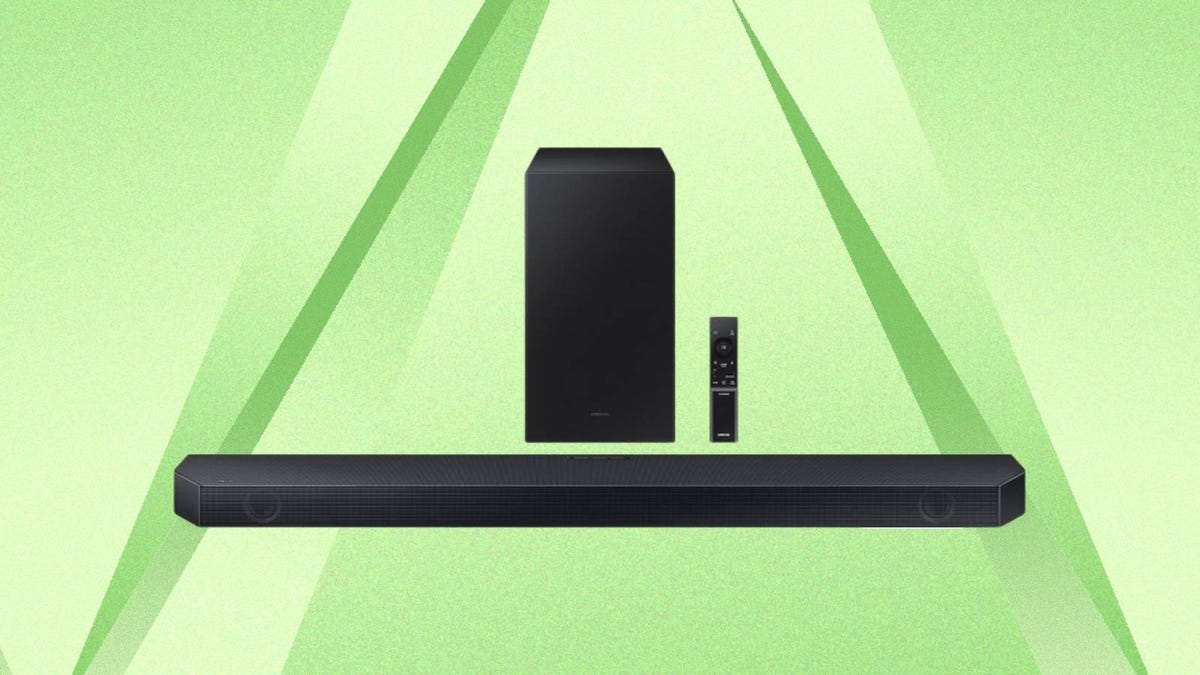
Samsung’s Q-Series 3.1-Channel Soundbar Is Currently Down to $248 (Save $250)
Soundbars are a serious sound quality upgrade over your TV’s built-in speakers, and they cost a lot less than a full home theater setup. Right now, Amazon has slashed the price of the Samsung Q-Series HW-Q60C 3.1 channel soundbar by over 50%, bringing the cost to just $248. That’s a savings of $250 and the lowest price we’ve seen. We don’t know how long this offer will last, so we recommend making your purchase sooner rather than later.
This soundbar and subwoofer set supports Dolby Atmos and Adaptive Sound Lite, while jumping your current setup to three channels of audio, which will create a more immersive sound experience. It comes equipped with multipoint Bluetooth connectivity, which means you can connect two smart devices at once, plus if you have a compatible Samsung TV, you can use Q-Symphony to pair the devices’ audio. And for gamers, this soundbar has a game mode that optimizes how you play, thanks to directional audio that helps eliminate distractions.
Other benefits exclusively for Samsung fans are that select Samsung phones can use a tap-to-hear feature to stream music from your phone to your soundbar, as well as a remote that will allow you to control your Samsung TV and soundbar from one place. That said, you can still use this soundbar with other brands for a fuller sound. If you’ve been looking for an affordable soundbar, this is a stellar deal.
Read more: How Dolby Vision and Atmos Make Scary Movies Like ‘It’ More Immersive — and Terrifying
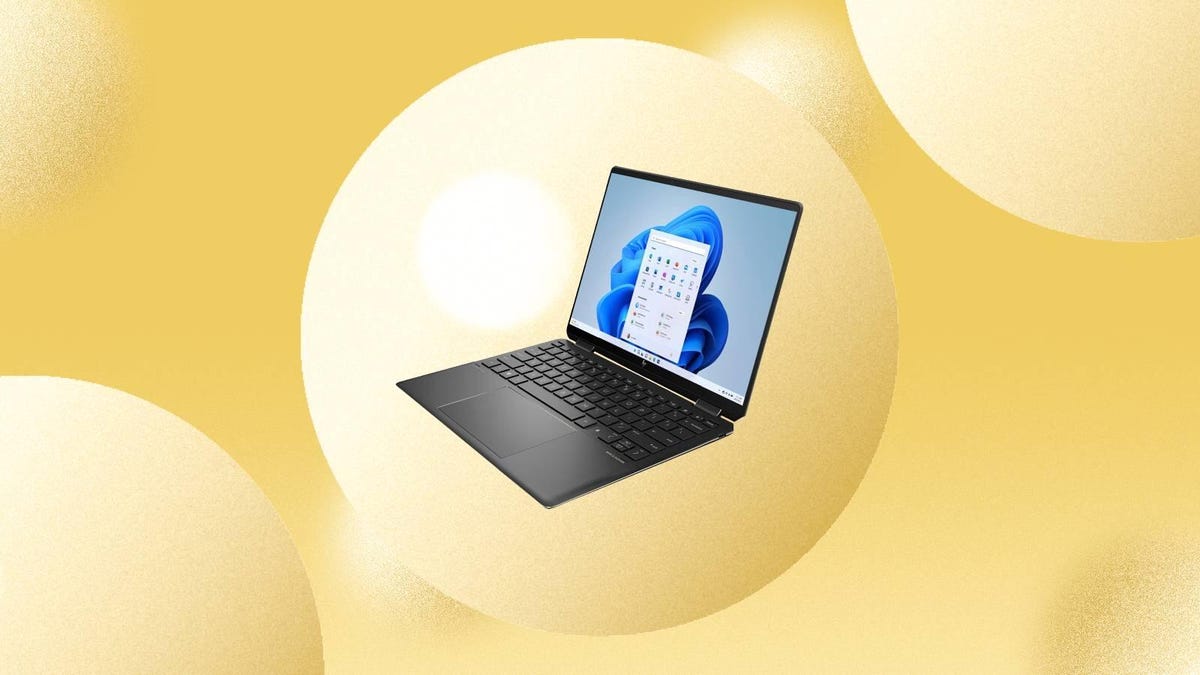
Take Home the HP Spectre 2-in-1 for $850 at Best Buy (Save $650)
For true versatility, investing in a two-in-one model that combines the best of tablets and laptops in one device has long been a good idea. Right now, you can nab the HP Spectre 2-in-1 laptop for $850 — that’s a $650 discount. And if you’re a My Best Buy Plus or Total member, you can score an extra $50 savings, bringing the price down to just $800. We don’t know how long this offer will last, so we recommend making your purchase sooner rather than later.
This 2023 laptop comes equipped with a 13.5-inch IPS touchscreen display with full HD resolution and durable Corning Gorilla Glass. Because it’s nice and compact, it’s a solid portable option for those who need a computer to take on the go, and it has a full 360-degree hinge to use it in multiple positions.
As for storage, this model has 512GB of solid-state storage and 16GB of RAM, plus it has a 13th-gen Intel i7 Evo processor to handle big projects, multitasking, multimedia and more. It’s also compatible with Wi-Fi 6E for those who have a cutting-edge router. And with fast charge, you’ll be able to bring a dead battery up to 50% in just 45 minutes.
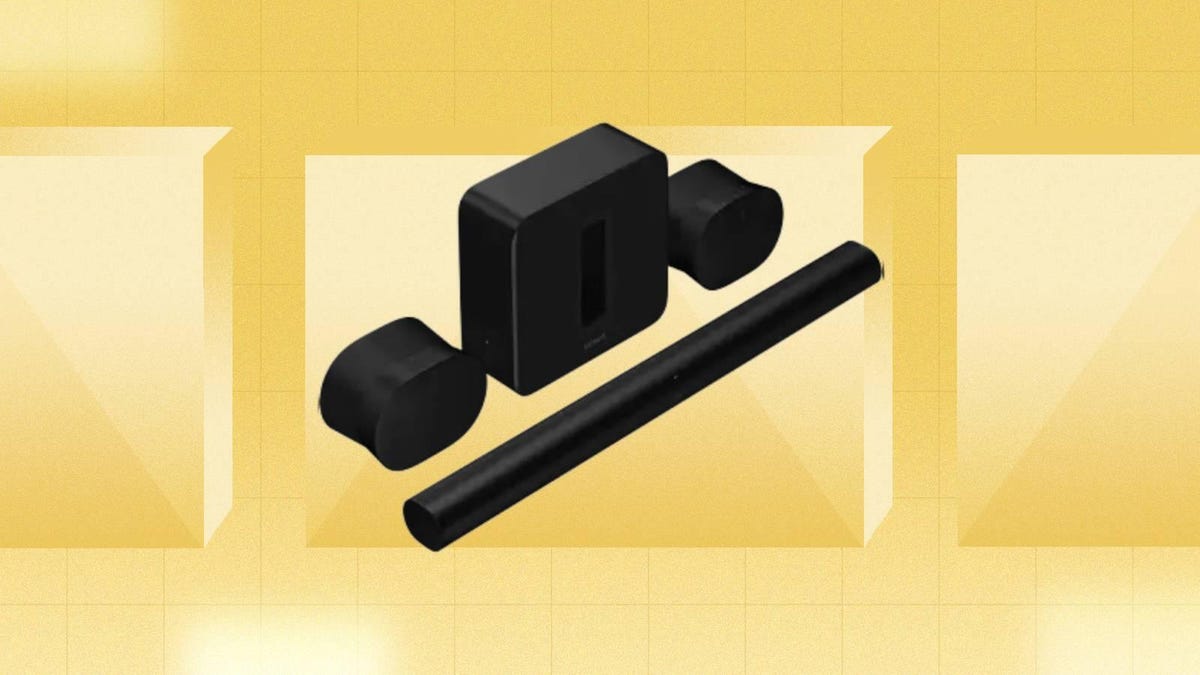
Sonos Is Offering Up to 20% Off Select Home Theater Sets Ahead of the Holiday Season
Elevate your entertainment space with a home theater speaker set. Whether you’re blasting tunes or looking for an immersive theatrical experience while streaming your favorite films, investing in Sonos speakers can be a great idea for any home. While top-tier Sonos speakers tend to be pricey, right now the company is slashing prices on home theater sets by up to 20%, making it a bit more affordable to revamp your space. These offers are available now through Oct. 29.
Looking for a powerful entertainment setup that supports Dolby Atmos? Right now you can snag the Premium Immersive Set with Arc for just $1,856. That’s certainly a splurge, but it’s $340 less than it normally lists for and includes an Arc premium smart soundbar, two Era 100 smart speakers and a Gen 3 Sub premium wireless subwoofer. Both the Sonos Arc and the Sonos Era 100 speakers earned spots on our roundup of the best Sonos speakers you can buy, which makes this set easy to recommend.
You can also lose the Era 100 speakers and opt for the Premium Entertainment Set with Arc for $1,358 — that’s a 20% discount. It still has the Arc and Sub so you can get immersive sound with Dolby Atmos for less. Or grab the Entertainment Set with Beam for $742 (save $186), which includes another of our favorite Sonos speakers, the Beam Gen 2 smart soundbar, along with a Sub Mini.
For the lowest price on a speaker set, check out this Entertainment Set with Ray option. It includes a Ray soundbar and a Sub Mini wireless subwoofer that will work together to deliver a more powerful bass and clear dialogue. And right now it’s discounted by by $142, bringing the price to just $566.
There are a number of other deals available as well, so be sure to check out the entire sale selection at Sonos to find the right theater set for your home.

Beats Studio Pro Headphones Get Custom Erling Haaland Treatment in EA Sports’ FC 24
Over the years, Beats, which is owned by Apple, has released its headphones and earbuds in a variety of new colors to help freshen them up over their extended product cycles. But for the first time it’s entered the video gaming world with a new partnership with EA Sports’ FC 24, the highly popular soccer franchise — or football as it’s known throughout most of the world — that until this year carried FIFA branding.
Beats says that users who buy and play FC 24 by November 1st will earn Founder status and receive in-game rewards including a permanent Erling Haaland item in Ultimate Team as well a custom digital Haaland-inspired Beats Studio Pro Viking vanity in Volta Football, the street-style mode that has players competing on small pitches. Haaland is a star Norwegian striker and Beats band ambassador who plays for Manchester City in England’s Premier League. He is on the cover of the standard edition of the game.
I can’t say I found the Viking design of the headphone all that eye-catching. It’s a black and white affair with “Viking” splayed across the headband. But perhaps in time we’ll see different versions of it with a little more color.
Beats notes that coming in December in FC 24’s Player Career mode, players will be able to purchase virtual Beats headphones with their in-game salaries to earn Personality Points that elevate their performance in-game. “Further along in their career, players can also become a Beats Ambassador for additional salary and in-game PlayStyles benefits,” Beats add, and “in Manager Career mode, players will be able to assign Beats inspired kits to their custom created clubs.”
Alas, you can’t buy a real-life physical version of the Haaland Viking Beats Studio Pro. The headphones, which launched back in July, come in brown, black, navy and sandstone. They list for $350, but were recently on sale at Amazon for October Prime day for $180 (look for the same deal as we head into Black Friday next month). Read our Beats Studio Pro review.
